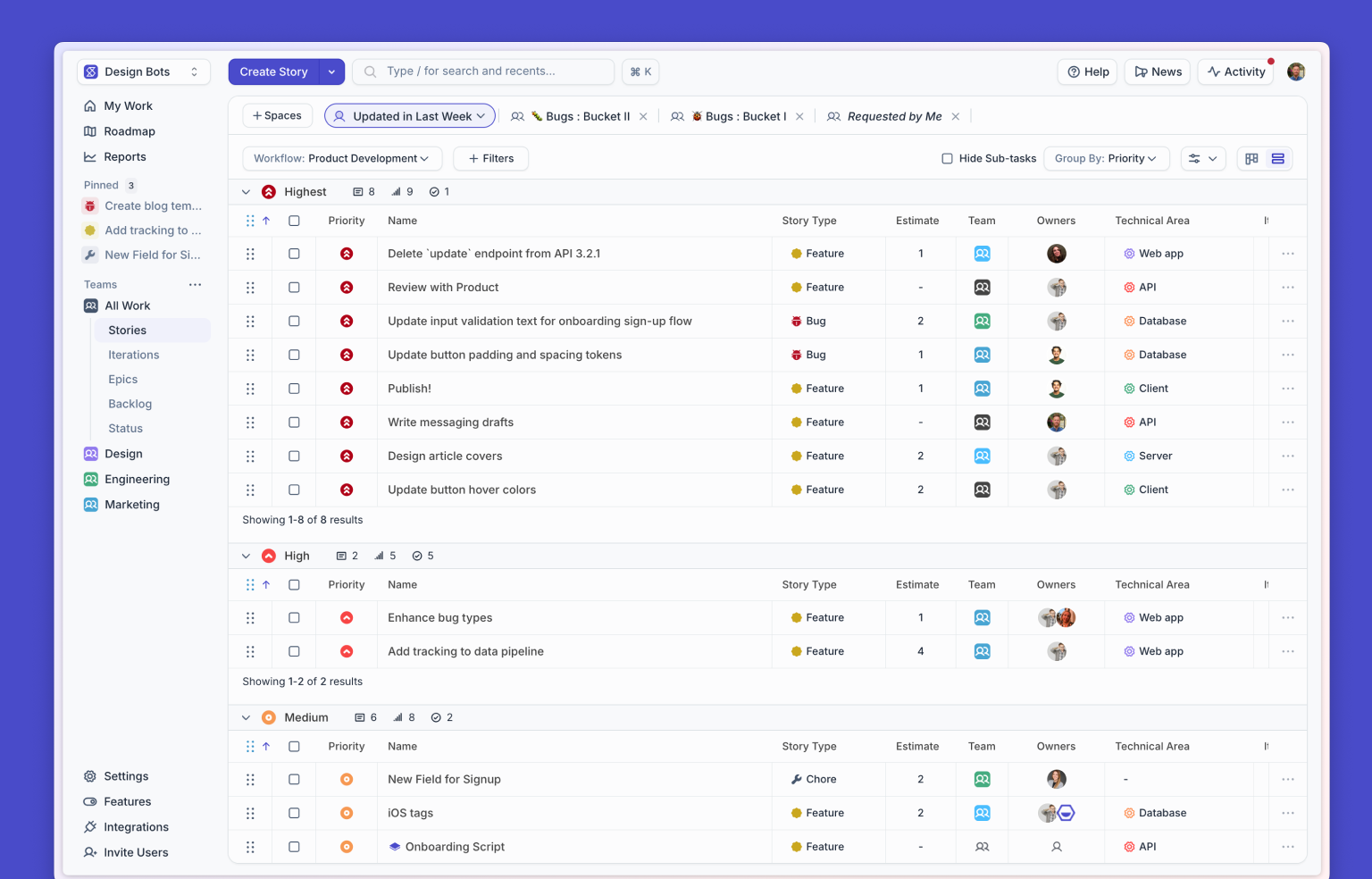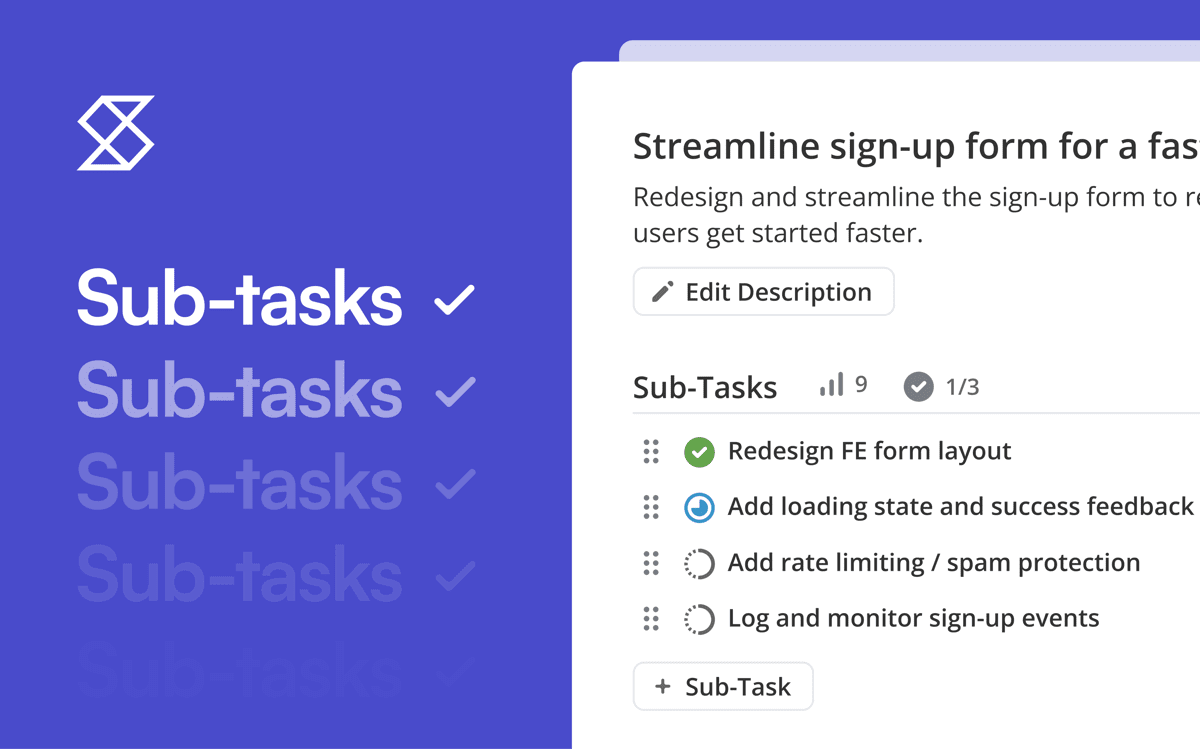It’s Valentine’s Day, which means we’re going to talk about relationships. And trust.
Even if it wasn’t Valentine’s Day, and it was more like the day after Valentine’s Day, which it is, we’d still probably want to talk about building good relationships through trust in the workplace, whatever ‘workplace’ means to you these days - on a boat, in your kitchen, under a tent? Wherever you are, healthy, high-performing software teams should consistently work towards building trust: within squads, across squads, between squads, and with their managers and stakeholders. One way to do this is through reporting and metrics.
Reporting and metrics, though some find them scary, can actually be a great way to create healthy relationships between management and individual contributors, affectionately known as ICs in the land of business acronyms.
But reporting and metrics, when used incorrectly, can create hostile relationships between management and ICs. So don’t do that.
How do you not do that? To find out, I sat down with our very own Dana Calderone, who is our Growth Product Manager at Shortcut. Here’s what she said.
Why is reporting an important part of a product manager’s role?
Reporting enables product managers to help their teams improve their processes - just like they work to improve their products. Think of your team’s development process like one of the products you own - build, measure and learn! Reporting enables the “measure” part of that equation. Like the saying goes - you can’t improve what you can’t measure.
How can this measuring help build trust among individual contributors?
It builds trust because it takes the guesswork out of understanding how your team is performing. Without proper reporting, things like retrospectives can become emotional, and finding team inefficiency is more of a matter of gut instinct.
But by rooting conversations in data, you can all work together to figure out why development may be slow, why features miss their deadlines, etc.
Reporting also helps product managers gain a deeper understanding of what engineers face day-to-day. For example, it may feel like the development of a feature is going slow. But when you look at the data, you may see that an engineer actually had a bug they had to deal with unexpectedly, or that their pull request sat in code review for a long time, and then became subject to merge conflicts.
This allows product managers to work more productively and remove the blockers that are preventing their teams from moving fast, rather than just putting pressure on engineering counterparts to work more.
How can product managers use Shortcut to make reporting easier?
Shortcut has lots of great reports that you can use to understand how your team is doing. I am personally a big fan of the Burndown Charts and Cycle Time / Lead Time Chart.
My team uses sprints to break down work into 2-week chunks. We strive to accurately add the amount of work to a sprint that we can actually accomplish in 2 weeks (something that is much harder to do than you’d think).
The Burndown Charts help us to understand whether or not we’re on track to hit that goal. By measuring our progress during and after each sprint, we get more accurate over time and get better at predicting how long work will take.
Cycle time is a powerful tool in helping your development team move faster. Ideally, you’d like your team’s cycle time to be as short as possible. This means that you are able to move work from in-progress to in-production quickly. This has benefits like fewer long pull requests where bugs get missed, fewer instances of merge conflicts, less context switching amongst developers, and overall a more efficient team.
📚 Read more: How to Convince Your Team to Use Shortcut in 5 Easy Steps
What should you NOT do when it comes to reporting?
Reporting and data can be used to make your whole team better. Reporting should NOT be used to finger point or to call out others for their mistakes. Remember that everyone is doing the best they can to move quickly, and things that slow people down are typically process problems. Reporting can help uncover issues with the process itself, rather than individuals.
You write and share a weekly growth update to everyone at Shortcut. Can you tell us a little about that?
I began writing the weekly growth updates to help us be a more data-driven organization and to increase transparency. Like most startups, Shortcut is trying to grow! I am a firm believer that getting more thinking about a problem will help breed great ideas on how to solve it! By rooting everyone in the data surrounding our growth, I think we’re more likely to accomplish our goals as an organization.
What kind of responses have you been getting?
People seem to love it! I think it helps build trust by giving everyone a glimpse into how we’re performing against our goals.
Thank you very much, Dana!
📚 Read more: Ultimate Setup Series: Best Practices for Teams
If you want to be really trustworthy and have great relationships this (yesterday’s) Valentine’s Day and all the Valentine’s Days to come, sign up for a free trial of Shortcut and start reporting!

















%20(788%20x%20492%20px)%20(1).png)
.png)

